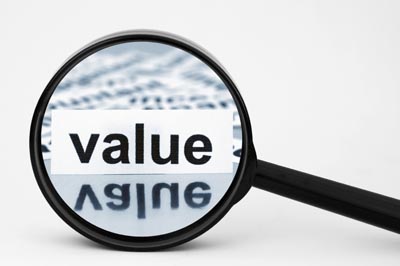 As I’ve mentioned before, for many companies continuous improvement programs simply won’t be enough to handle the growing squeeze on margins. But what are companies to do? Well, stop paving the cow path. Instead, companies need to approach innovation in how they do business similar to the way they approach new product innovation. They need to identify need states, challenge the way things are done now and create concepts for new ways to operate: ways of doing things that are more effective at producing the desired output and significantly more cost and cash efficient. They need to dig into the heart of what makes their business tick, from suppliers to consumers, and rethink how it could be done better, faster, cheaper, and more effectively.
As I’ve mentioned before, for many companies continuous improvement programs simply won’t be enough to handle the growing squeeze on margins. But what are companies to do? Well, stop paving the cow path. Instead, companies need to approach innovation in how they do business similar to the way they approach new product innovation. They need to identify need states, challenge the way things are done now and create concepts for new ways to operate: ways of doing things that are more effective at producing the desired output and significantly more cost and cash efficient. They need to dig into the heart of what makes their business tick, from suppliers to consumers, and rethink how it could be done better, faster, cheaper, and more effectively.
There are three strategies for E2E™ productivity innovation and this blog post introduces the first strategy: Assess End-to-End™. It’s important to note that the output of E2E productivity innovation assessments is an array of qualified concepts that are incremental to the current business productivity initiatives. E2E™ assessments fill the first phase of the value creation funnel in your productivity pipeline. They then need to be developed and commercialized before savings or cash efficiencies are realized. It’s equally important to note that this approach to productivity innovation applies to many different industries and businesses.
There are three steps to conducting an E2E™ assessment.
 structure: sponsorship, the Core team and the advisory network. The outputs of this step include aligned and engaged stakeholders with clear roles and responsibilities and a detailed work plan.
structure: sponsorship, the Core team and the advisory network. The outputs of this step include aligned and engaged stakeholders with clear roles and responsibilities and a detailed work plan. objectives laid out in the E2E™charter but may include a combination of scenario-building, external benchmarking, simulation, structured concept “tests” and analytical rigor. The outputs of this step include an array of qualified productivity innovation concepts that are incremental to the business’s current productivity efforts.
objectives laid out in the E2E™charter but may include a combination of scenario-building, external benchmarking, simulation, structured concept “tests” and analytical rigor. The outputs of this step include an array of qualified productivity innovation concepts that are incremental to the business’s current productivity efforts.In every case so far, the list has included a mix of opportunities: some are strategic, some are tactical; some require capital to implement, many do not; some are quick “go do it” items, some have longer implementation horizons; some are cost reductions, some are cash flow generators. All assessments will generate both big and small opportunities that need to be managed forward through the Idea to Market™ process with the next E2E™ strategy: Align the Opportunities.
This next E2E™ strategy will be the subject of the my next blog post. In the meantime, if you want a whitepaper that includes more details regarding the steps in the first E2E™ strategy described above, go here and request a copy. I’ll send it to you within a few days of receipt of your request. It’s free to everybody.